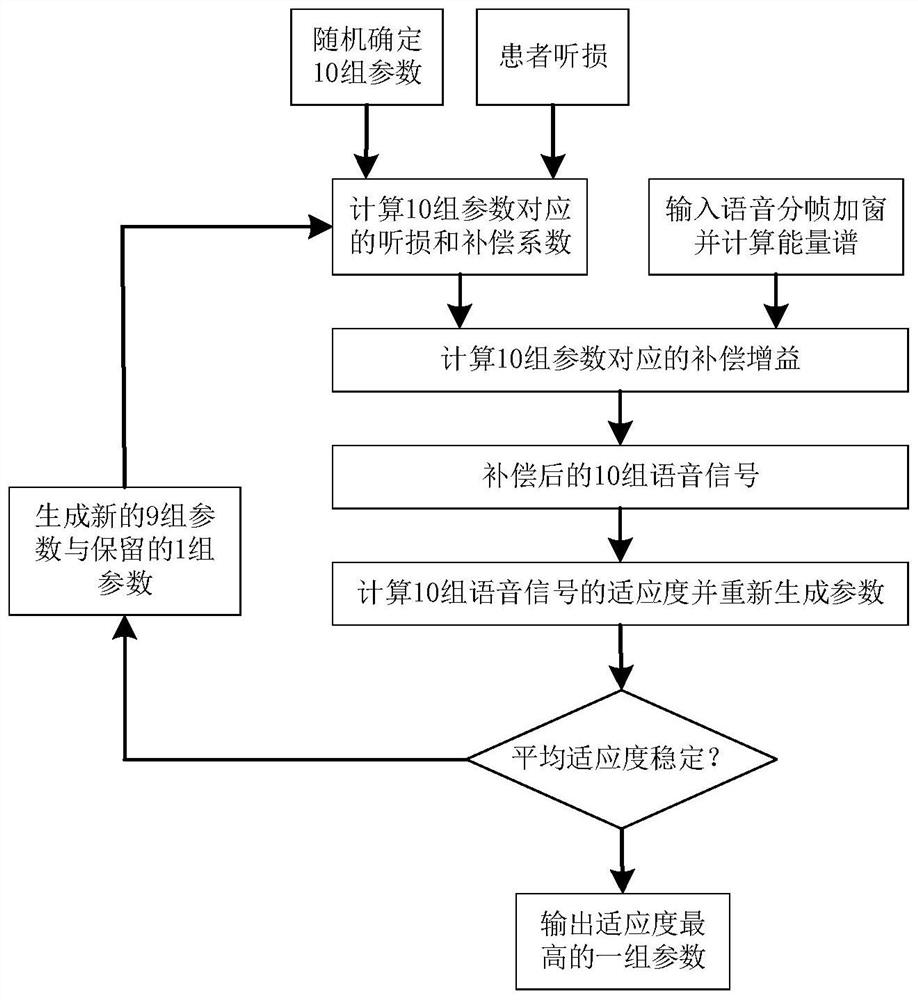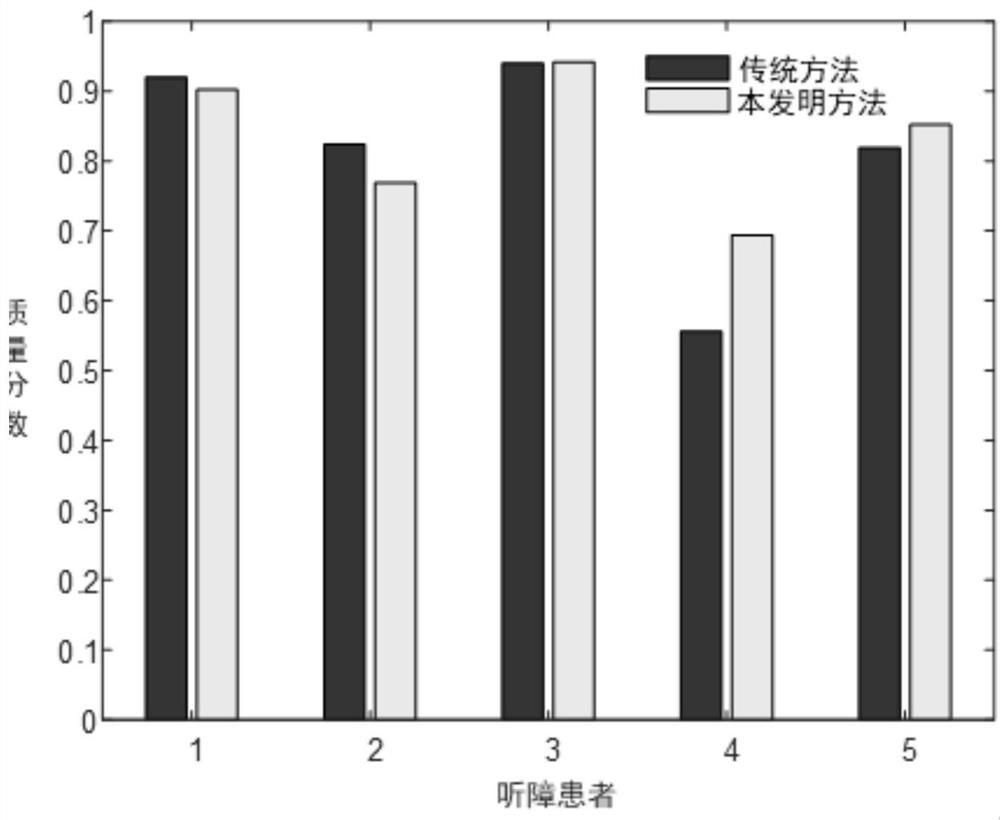Parameter self-adjusting method for fitting-free hearing aid
A hearing aid and self-adjusting technology, applied in hearing aids, electrical components, etc., can solve the problems of poor stability, affecting the practicability of the algorithm, and not making full use of the comprehensive information of patients, and achieving the effect of easy popularization and convenient parameter adjustment methods.
- Summary
- Abstract
- Description
- Claims
- Application Information
AI Technical Summary
Problems solved by technology
Method used
Image
Examples
Embodiment Construction
[0065] The present invention will be further described below in conjunction with the accompanying drawings.
[0066] Such as figure 1 As shown, a method for parameter self-adjustment of a fitting-free hearing aid of the present invention comprises the following steps:
[0067] Step 1: Determine 10 groups of parameters [a 1 ,b 1 ,a 2 ,b 2 ,r,s,t] 1~10 , including the adjustment coefficient a of the filter below the center frequency CF 1 and b 1 , the adjustment coefficient a of the filter above the center frequency CF 2 and b 2 , the compensation adjustment coefficient r and the normal ear maximum gain adjustment coefficients s and t, the values of the center frequency CF include 125, 250, 500, 1000, 2000, 4000 and 6000Hz; seven parameters a 1 ,b 1 ,a 2 ,b 2 , r, s, t are respectively set to [0.108±0.01], [2.33±0.2], [0.0641±0.006], [0±0.1], [0.05±0.005], [0.019±0.002], [1.1±0.1] Random variables uniformly distributed within the range, 10 sets of parameters are r...
PUM
 Login to View More
Login to View More Abstract
Description
Claims
Application Information
 Login to View More
Login to View More - R&D
- Intellectual Property
- Life Sciences
- Materials
- Tech Scout
- Unparalleled Data Quality
- Higher Quality Content
- 60% Fewer Hallucinations
Browse by: Latest US Patents, China's latest patents, Technical Efficacy Thesaurus, Application Domain, Technology Topic, Popular Technical Reports.
© 2025 PatSnap. All rights reserved.Legal|Privacy policy|Modern Slavery Act Transparency Statement|Sitemap|About US| Contact US: help@patsnap.com



